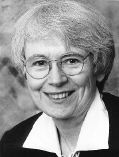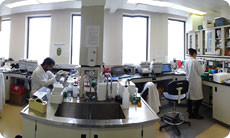 The inauguration of the Tapscott Chair in Schizophrenia at the University of Toronto took place in 1997. I occupied the Chair for the first three years. At that time, second generation antipsychotic drugs were relatively new and considerable energy on the part of our group went into discovering how these drugs could be effective without producing the secondary effects associated with the older drugs. To this end, basic and clinical psychopharmacology techniques, genetic strategies, and PET imaging techniques were used to determine the neurotransmitters involved and the specific receptor affinity of the various drugs. It was determined that dopamine was principally involved, that the occupancy of 60-80% of dopamine D2 receptors was needed for clinical effectiveness, and that higher occupancy in the striatum of the brain resulted in extrapyramidal effects. The effective dose of the second generation drugs also occupied the same percent of receptors but did so for briefer periods of time. In other words, the drug molecules did their work and slid off the receptor, the so-called ‘fast-off’ concept. The study of receptor dimers and animal models led to the speculation that a supersensitive state of D2 receptors, D2high receptors, were elevated in psychotic states and, when occupied by drug for sufficient periods of time during a 24 hour period, led to the abatement of psychotic symptoms. This mechanism of action, discovered at the University of Toronto, has deepened the understanding of drug action and has helped drug development.
The inauguration of the Tapscott Chair in Schizophrenia at the University of Toronto took place in 1997. I occupied the Chair for the first three years. At that time, second generation antipsychotic drugs were relatively new and considerable energy on the part of our group went into discovering how these drugs could be effective without producing the secondary effects associated with the older drugs. To this end, basic and clinical psychopharmacology techniques, genetic strategies, and PET imaging techniques were used to determine the neurotransmitters involved and the specific receptor affinity of the various drugs. It was determined that dopamine was principally involved, that the occupancy of 60-80% of dopamine D2 receptors was needed for clinical effectiveness, and that higher occupancy in the striatum of the brain resulted in extrapyramidal effects. The effective dose of the second generation drugs also occupied the same percent of receptors but did so for briefer periods of time. In other words, the drug molecules did their work and slid off the receptor, the so-called ‘fast-off’ concept. The study of receptor dimers and animal models led to the speculation that a supersensitive state of D2 receptors, D2high receptors, were elevated in psychotic states and, when occupied by drug for sufficient periods of time during a 24 hour period, led to the abatement of psychotic symptoms. This mechanism of action, discovered at the University of Toronto, has deepened the understanding of drug action and has helped drug development.
It was recognized in 1997 that the course of schizophrenia differed in women and men. Most notably, initial episodes of illness occurred earlier in men and late onset schizophrenia, over the age of 45, occurred primarily in women. The University of Toronto spearheaded an interest in male/female differences that led to investigations into hormonal effects on the brain dopamine system, inquiry into long-term effects of birth injury and trauma, demographics of substance use in adolescence, and reproductive effects on illness course in women. A clinical focus on antipsychotic response differences in men and women followed, as well as investigations on antipsychotic side-effects that impact on women, especially on pregnancy and lactation, fetal growth and on the neonate. Scholarship in domestic abuse, postpartum illness, parenting with schizophrenia and legal/ethical issues of child custody grew out of the focus on women. The study of male/female differences led to the development of clinical treatment guidelines and clinical trial research guidelines.
The University of Toronto developed a subspecialty in First Episode schizophrenia and an interest in the at-risk state. Visualizing cognitive strategies used by patients in precursor states of illness and premorbid states shed light on brain connectivity and defect. States of avolition and apathy, so-called ‘negative schizophrenia,’ for which no effective treatment existed, were monitored and investigated, as was ‘lack of insight,’ a cardinal feature of schizophrenia. Cognitive impairment in schizophrenia emerged as a core problem.
A well-developed clinical psychopharmacology unit dealt with issues of adherence to medication regimens, incomplete response, the obesity and metabolic problems that resulted from longer term use of second generation drugs and sedentary life styles, the death rate both from suicide and from cardiovascular side-effects, substance abuse (including high rates of smoking), and violence. Individual responses to antipsychotics and individual vulnerability to specific side-effects was studied with molecular genetic techniques.
The University of Toronto group was one of the first to conduct studies on patients with the 22 q deletion syndrome, where 30% of those with this genetic syndrome develop signs and symptoms of schizophrenia. Although most patients suffering from schizophrenia do not have identifiable causative genetic mutations, there is a high rate of mutations among the schizophrenia population and this particular subtype has helped to discover etiologic and pathogenenic mechanisms that may be common to other types of schizophrenia.
It was an honour to serve as the first Tapscott Chair 1997-2000, during a period of ferment and discovery.
Mary V. Seeman MD
March 20, 2012




